Yokohama, which prospered as a trading port since long ago, is one of few locations in Japan where you can enjoy cherry blossoms in a modern atmosphere and exotic cityscape. Meanwhile in Kamakura, surrounded by nature of the sea and the mountain, you can see the cherry blossom scenery against the backdrop of traditional Japanese culture. Both cities can be reached in just over an hour drive from Tokyo, so why don’t you enjoy the blossoms as you embark on a sightseeing tour of these fascinating cities.
Popular Hanami Spot Ranking – Yokohama
1: Yamashita Park (Naka Ward, Yokohama City) http://www.welcome.city.yokohama.jp/ja/tourism/spot/details.php?bbid=190
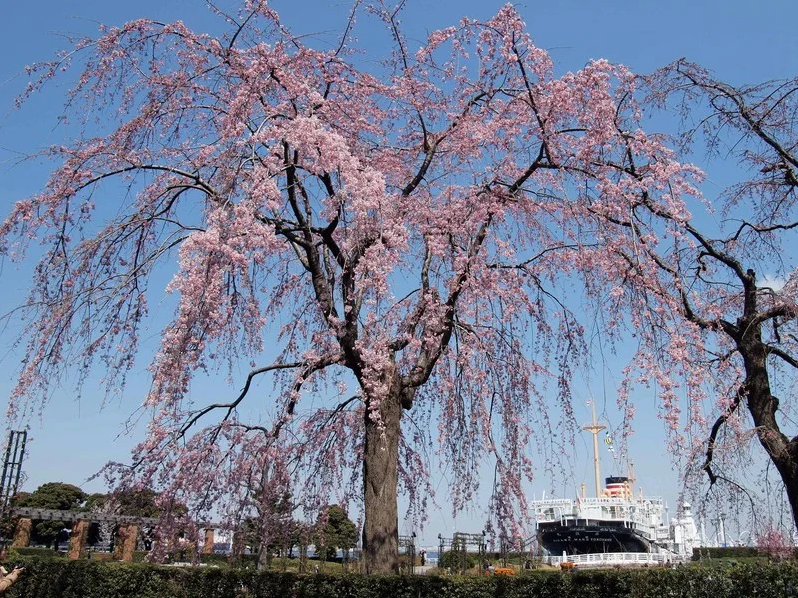
■ Highlights: Yamashita Park is a one of the most popular tourist attractions in Yokohama, and many tourists from home and abroad visit all year. You can enjoy the very best view that Yokohama can offer, and also see the cherry blossoms with Yokohama Marine Tower and the passenger ship Hikawa Maru in the background. The weeping cherry tree (Shidarezakura) on the eastern part of the park near World Square is especially magnificent. It will also be fun to appreciate the cherry blossoms at night while also enjoying the nightscape.
■ Typical Blooming Season: late March to early April
Access:
<Area information>
■ Yokohama Chinatown: http://www.chinatown.or.jp/
Yokohama Chinatown is located right outside the central exit of Yamashita Park. This is also a famous tourist attraction and it is often crowded with people. Chinatown has not only restaurants, but souvenir shops, relaxation and amusement facilities and tourist spots like Emperor Guan’s Shrine. It’s a great place to snack while exploring the streets or to visit for lunch or dinner. It’s a must see when you’re in Yokohama.
2. Motomachi Park (Naka Ward, Yokohama City): http://www.hama-midorinokyokai.or.jp/yamate-seiyoukan/ehrismann/
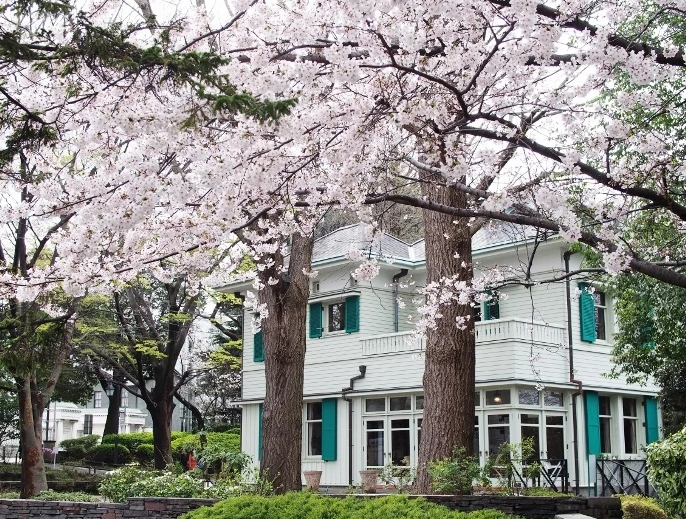
■ Highlights: Motomachi Park is located in Yamate, which was a foreign resident area in Yokohama. This park has a western building called the Ehrismann Residence in the grounds, adjacent to the Foreigners’ Cemetery. The park rests on top of a small hill and has about 80 cherry trees. The harmony of modern Western-style architecture and the cherry blossoms is splendid. In the distance you can see the Yokohama Landmark building, so you can also enjoy the contrast with the cityscape. Since it is in an area with many uphill slopes, it will be easier for you to visit using a charter vehicle.
Opening hours: 9: 30am ~ 5:00pm
Closed: Second Wednesday of each month
■ Typical Blooming Season: late March to early April
Access:
<Area information>
■ Yamate, the Bluff district: http://www.hama-midorinokyokai.or.jp/yamate-seiyoukan/map.php
In the old days, Yokohama developed in to a base for trade. There is a foreign resident area with Western-style buildings and garden built during those times that still exist today. In this area called Yamate, there are many culturally significant buildings like Bluff 18 that used to be a trade merchant’s residence, foreign diplomat’s house, and British House that was the British consular residence. The modern and peaceful cityscape has many picturesque spots for you to photograph. Why don’t you explore the landscape by the sea while enjoying being transported in your charter car?
3. Mitsuike Park (Tsurumi Ward, Yokohama City):
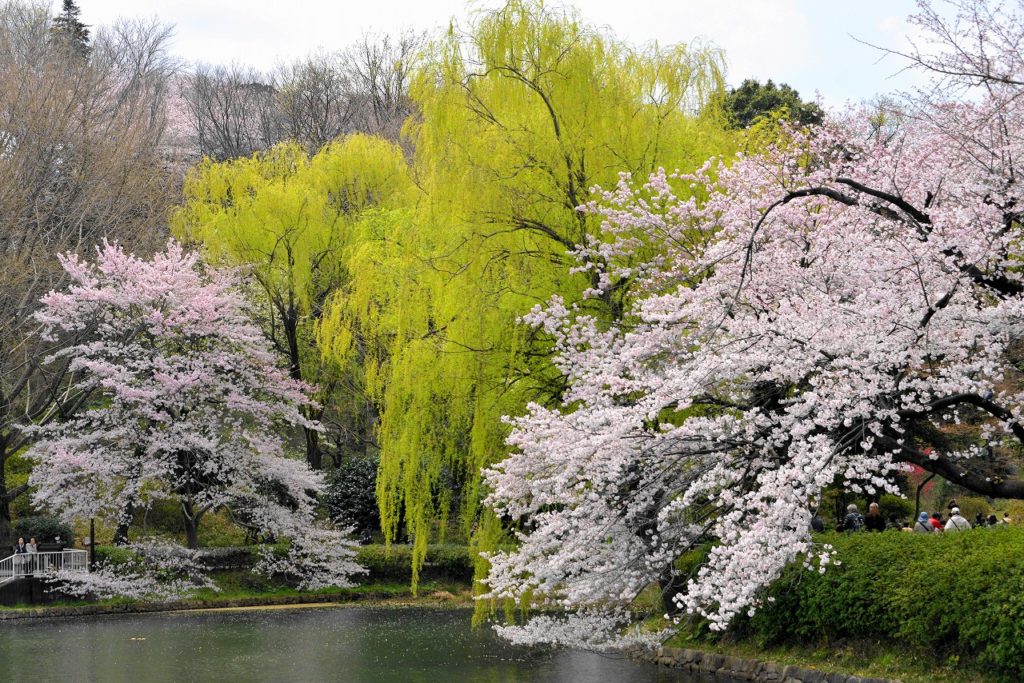
■ Highlights: Mitsuike Park is a famous hanami spot that was selected in Japan’s “100 best views of Sakura” list. Kanzakura (cold cherry blossoms) blooms ahead of the others in mid-February, and 1600 cherry trees bloom during the season. There are total of three ponds in the park, which reflects its name Mitsuike (Three Pond) Park. The scenery of the cherry blossoms being reflected on to the water surfaces is strikingly beautiful. There are 78 varieties of cherry trees in the park so you can see many kinds of cherry blossoms at once. The park is some distance from Yokohama Station and hard to reach via public transport, so it will be easier to visit by hiring a charter vehicle.
■ Typical Blooming Season: late March to early April
Access:
<Area information>
■ Kirin Beer Yokohama Factory https://www.kirin.co.jp/entertainment/factory/yokohama/
You can join the tour of the Kirin Beer Factory, one of the leading Beer brands in Japan. In addition to learning about raw ingredients, manufacturing methods and packaging, you can also taste test the beer at the end of the tour. You can also enjoy some barbecue at the restaurant adjacent to the factory. You must reserve your place in advance via online reservation.
Opening hours: 10:00am ~ 5:00pm (Please check in advance)
Closed: Every Monday
Popular Hanami Spot Ranking – Kamakura
1. Tsurugaoka Hachimangu Shrine (Kamakura city)
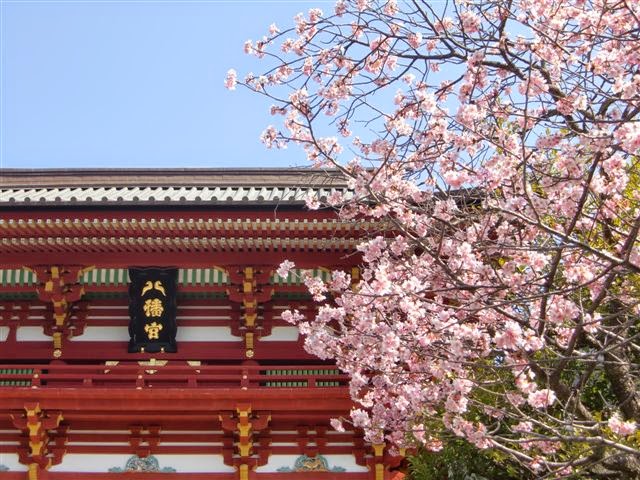
■ Highlights: Tsurugaoka Hachimangu is also famous as a tourist attraction and many visitors come from home and abroad regardless of the season. During the cherry blossom season, we recommend that you see the cherry-blossoms along the Genji pond in the shrine precincts. Here you can see the cherry blossoms all surrounding the pond, with its outstretched branches centimeters away from the water surface. It truly is breathtaking to see. Near the Genji pond, you can also see the spectacular peonies at the Peony Garden. Since there will be a lot of traffic on the roads around Tsurugaoka Hachimangu Shrine, it would be a good idea to arrange your charter vehicle to drop you off and pick you up near the shrine.
Opening Hours: 6:00am-9: 00pm
■ Typical Blooming Season: late March to early April
Access:
<Area information>
■ Kencho-ji Temple: https://www.kenchoji.com/
Built in 1253, Kencho-ji Temple has many historically significant architectures such as the Somon (outer gate), Sanmon (Main Gate), Buddha Hall and Dharma Hall, which are all designated as Important Cultural Properties of Japan. The magnificent dragon painting on the ceiling and decorations on the Karamon (Grand Gate) are also worth a closer look. The sandalwood tree thought to be around 730 years of age growing in front of the Buddha Hall is also stunning. There is a hiking trail just beyond the Buddha Hall, so you can also do some exercise in the midst of nature while you’re exploring the temple grounds.
Opening Hours: 8: 30am-6: 30pm
2. Genjiyama Park (Kamakura city): https://www.city.kamakura.kanagawa.jp/koen/p_genjiyama.html
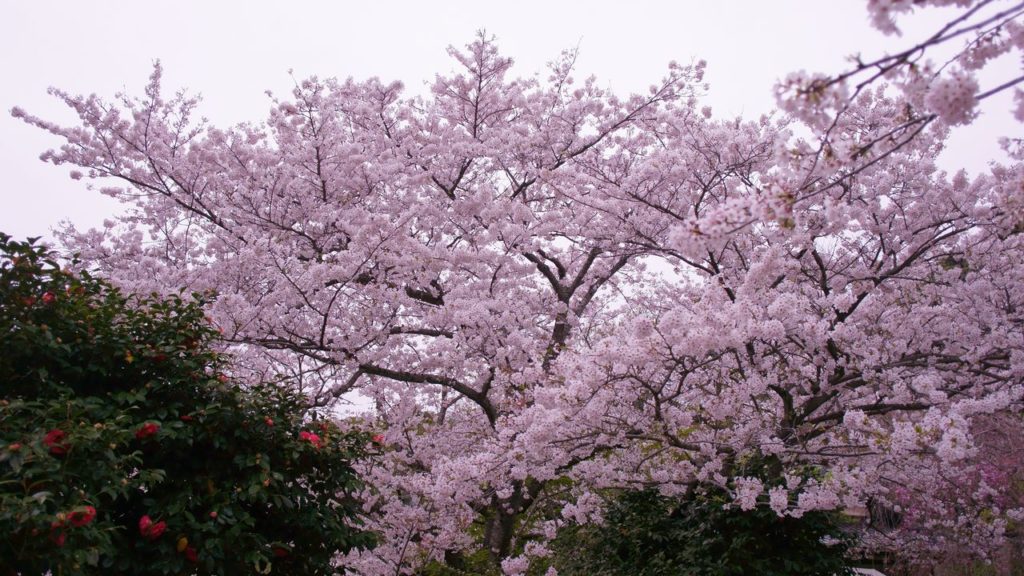
■ Highlights: This location is popular as a hanami (cherry-blossom viewing) spot where you can feel the historical atmosphere at the same time. There are about 300 cherry blossoms in the garden that was created by clearing an area of the Genjiyama’s summit, and you can see the magnificent scenery together with nature of the mountains. You can reach Genjiyama Park from Kamakura Station via a residential area, or you can tread along the Kuzuhara Oka hiking trail that connects Kitakamakura and Hase area. If you are an active person, why don’t you explore the area while checking out the cherry blossoms along the way. If you arrange for a pick up and transfer with a charter vehicle, you can enjoy hiking to the fullest.
Access:
■ Typical Blooming Season: late March to early April
<Area information>
■ Jufuku-ji Temple: https://www.city.kamakura.kanagawa.jp/kamakura-kankou/meisho/03jufukuji.html
This is an old temple with a long history, and you can enjoy its majestic atmosphere within a serene forest environment. Although only the entrance walkway is open to the public, you should be able to feel the calmness just by walking along the stone pavement. It is currently a candidate for World Heritage listing, and it may be a good idea to visit before it gets too crowded with tourists.
3. Engaku-ji Temple (Kamakura City) http://www.engakuji.or.jp/access.html
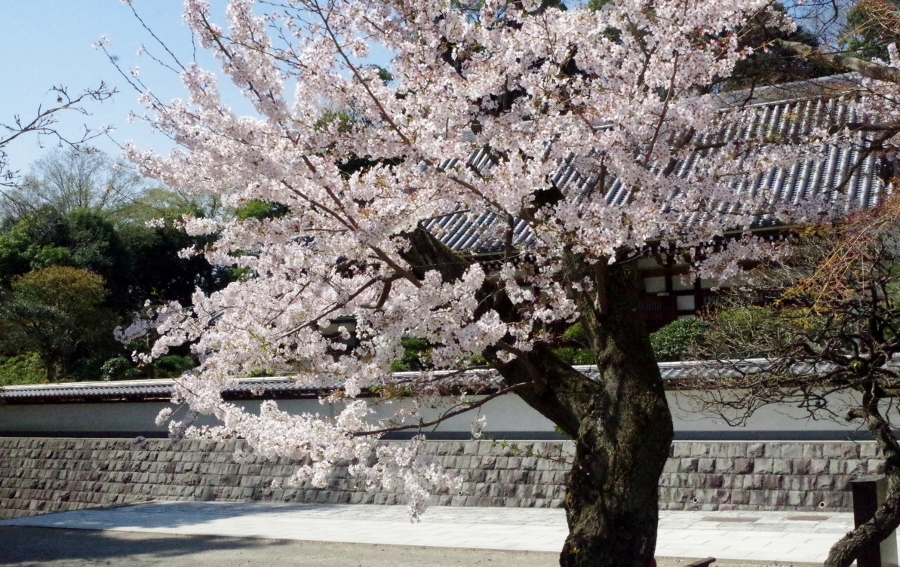
■ Highlights: At Engaku-ji Temple where you can enjoy the distinct atmosphere of the ancient city Kamakura, you get to appreciate a very Japanese cherry blossom scenery. The beauty of the cherry blossoms surrounded by the Sanmon gate and building with thatched roof make you feel somewhat nostalgic and calm at the same time. You can also view precious historical heritage items such as Shariden and Ogane, which are both national treasures. If you pay a visit early in the morning, you will be able to explore in a more relaxed manner than at other times of the day.
Opening Hours: · March ~ November 8: 00am~ 4: 30pm · December ~ February 8: 00am~ 4: 00pm
Access:
■ Typical Blooming Season: late March to early April
<Area information>
■ Meigetsuin: https://www.city.kamakura.kanagawa.kanagawa.jp/kamakura-kankou/meisho/07meigetuin.html
It is a venerable Zen temple where thousands of hydrangeas bloom in June. It is also known as “Ajisai (Hydrangea) Temple”. Even outside the hydrangea season, you can enjoy the beautiful scenery that typifies each season, such as the weeping cherry tree next to the Sanmon in spring and autumn leaves in the fall. If you look out onto the garden from the “enlightenment window” inside, you will recognize the “wabi sabi” feel characteristic of a Zen Temple.
Avoid the crowds! Secret Hanami Spot in Yokohama & Kamakura
■ Sankeien Garden (Naka Ward, Yokohama): https://www.sankeien.or.jp/
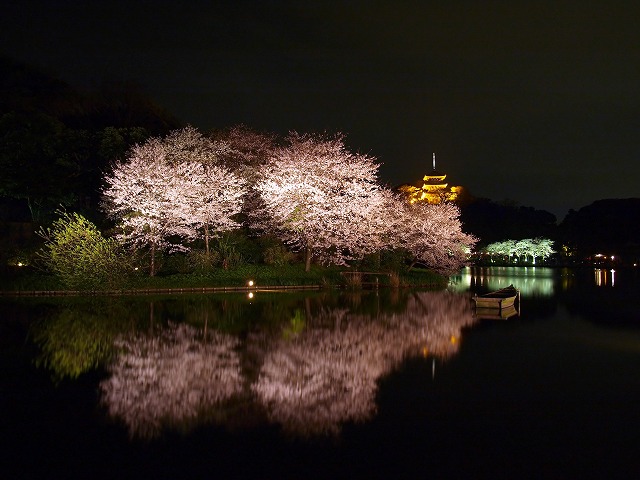
Sankeien Garden is a very large traditional Japanese garden. There are some old buildings designated as important cultural properties within the garden, like Three Storied Pagodas and Rinshunkaku. You can enjoy plums, cherry blossoms and other seasonal plants here. During the cherry blossom season, the garden will be lit up at night and the fantastic scenery of the Three Storied Pagoda with the cherry blossoms at night is memorable.
Opening hours: 9: 00am-5:00pm
■ Typical Blooming Season: late March to early April
■ Why is it less crowded?
Although there will be crowds during the cherry blossom season, you won’t feel cramped like other places as the garden is so big. As it is far from Yokohama station, it will be much easier to use a charter vehicle for transport.
■ Access:
■ Gokuraku-ji Temple: (Kamakura City) https://www.city.kamakura.kanagawa.jp/kamakura-kankou/meisho/02gokurakuji.html
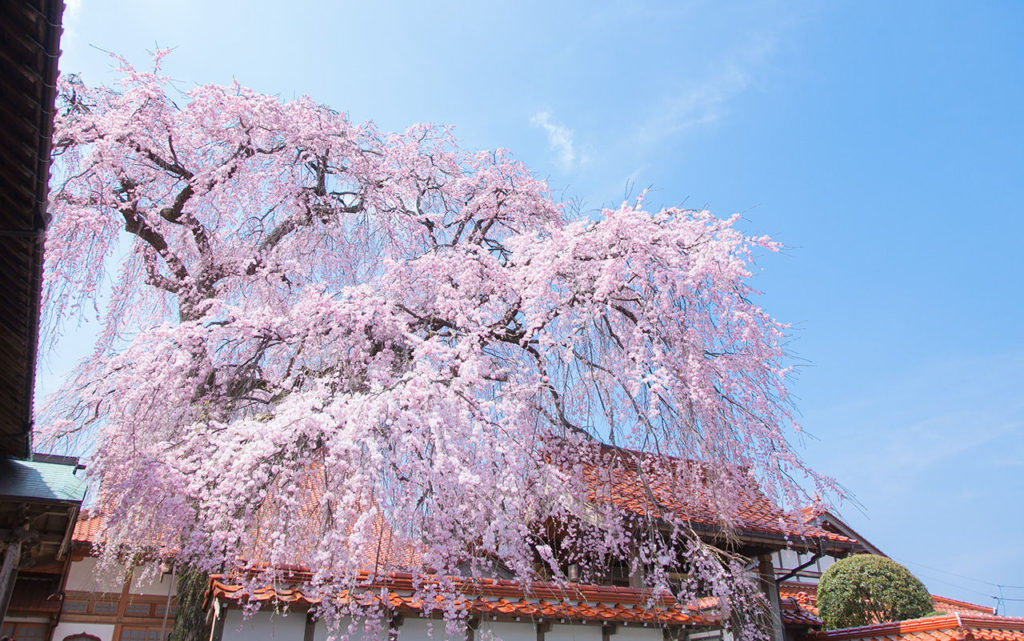
Gokuraku-ji Temple is situated some distance away from Kamakura Station, and close to Gokuraku-ji Station on Enoshima Electric Railway line. It is a compact little temple with a lot of history. In the cherry blossom season, the contrast of the weeping cherry tree that hangs over the thatched roof of the Sanmon gate creates a distinctly Japanese feel. You should pay a visit here as you go on a drive along the shores from Kamakura station.
Opening Hours: 9: 00am-4: 30pm
■ Typical Blooming Season: late March to mid-April
■ Why is it less crowded?
Since it is far away from Kamakura station, this hanami spot is more popular with locals. As it is a small temple, there are only a few tourists.
■ Access:
Tips and Tricks on avoiding the crowds
■ Go early in the morning or before lunchtime
Since Yokohama and Kamakura is within easy reach from Tokyo, many tourists visit during the cherry blossom season. If you really want to avoid the crowds, you will get to view the cherry blossoms in a more relaxed atmosphere if you go early in the morning or before lunchtime. Why don’t you hire a charter vehicle and enjoy the cherry blossoms blooming along the Enoshima Electric Railway line?
■ Visit just before closing time
For temples and gardens with a set opening hour, the last entry is usually 30 minutes before closing time. Since there will be only a few people entering at this time, you will be able to enjoy a relatively relaxed atmosphere. Although you can’t stay for too long, but it is recommended for people who really doesn’t like crowds.
